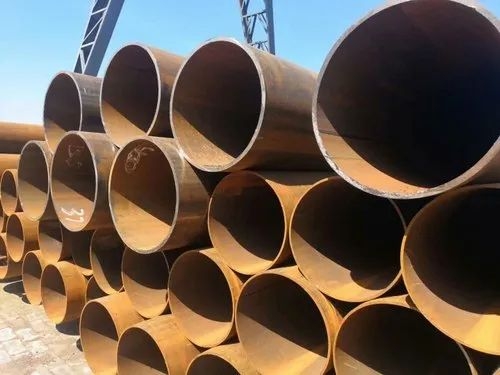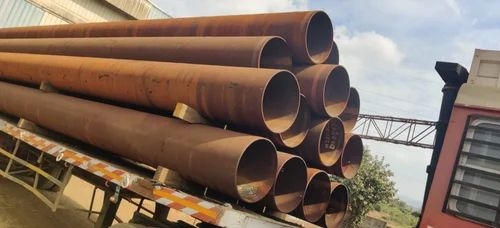Exploring the Strength: ASTM A139 Steel Pipe Standards
The ASTM A139 standard specifies requirements for electric-fusion (arc) welded steel pipes. These pipes are crucial in various high-demand applications due to their high strength and durability. Understanding the strength characteristics of ASTM A139 steel pipes is essential for engineers and architects to ensure safety and efficiency in construction and infrastructure projects. Cangzhou Shenlong, a prominent player in the steel pipe industry, has been specializing in the production and sales of various steel pipes and pipe fittings since 1992. Located in Cangzhou, Hebei, their extensive facility spans over 60,000 square meters and employs more than 200 skilled workers, including 30 inspectors. With an annual production capacity of approximately 150,000 tons of steel pipes and 40,000 tons of pipe fittings, Cangzhou Shenlong's products are globally recognized and utilized in critical sectors such as oil exploration, chemical industries, water conservancy, and architecture, reaching markets in the Middle East, Europe, Africa, and America.
Background of ASTM A139 Steel Pipe Standards
Development of ASTM A139 Standards
The ASTM A139 standard was established to fulfill the requirements for durable, high-strength welded steel pipes intended for long-distance transmission systems, including water and gas pipelines. Since its inception, the standard has been periodically updated to enhance its suitability for various environmental conditions and loading scenarios, aligning it with contemporary engineering standards.
Features and Specifications of ASTM A139 Steel Pipes
ASTM A139 steel pipes are renowned for their robust resistance to corrosion, exceptional durability, and ability to endure high pressures and temperatures. Fabricated using the electric-fusion (arc) welding method, these pipes guarantee a robust bond and a smooth internal finish. Available in multiple grades, they vary in elemental composition and mechanical properties, which enables their adaptation to diverse application needs.
Usage and Industry Applications of ASTM A139 Steel Pipes
Employed extensively in various sectors, ASTM A139 steel pipes are pivotal due to their strength and adaptability. Primary uses include municipal water supply, wastewater treatment facilities, structural foundations, and natural gas pipelines. Additionally, they are crucial in the construction sector for structural supports and in the energy industry for both onshore and offshore oil and gas extraction.
Mechanical Properties of ASTM A139 Steel Pipes
Tensile Strength
Designed to cope with high tensile forces, ASTM A139 steel pipes are ideal for applications involving high pressure and stress. The tensile strength varies depending on the steel grade and production method but generally remains at a high level.
Yield Strength
The yield strength denotes the maximum stress that ASTM A139 steel pipes can withstand before undergoing permanent deformation. This attribute is essential for evaluating the pipes' capacity to support structures and manage loads.
Elongation
Elongation measures the extent to which a material can stretch prior to rupture. ASTM A139 steel pipes display commendable elongation properties, which play a vital role in their ability to absorb energy and resist impacts effectively.
Impact Properties
The impact resistance of ASTM A139 steel pipes is crucial for their ability to withstand sudden shocks or impacts, an important feature in environments susceptible to mechanical damages or operational stresses.
Additional Mechanical Properties
Critical additional properties include hardness, which influences wear resistance, and fatigue strength, impacting the pipes’ performance under repeated stress. These characteristics ensure the pipes’ reliable performance throughout their expected service life under varied conditions.
Chemical Composition of ASTM A139 Steel Pipes
Constituent Elements and Limits
The composition of ASTM A139 steel pipes typically includes carbon, manganese, phosphorus, sulfur, and silicon. The concentrations of these elements are stringently controlled as they significantly affect the pipes' mechanical properties and their weldability.
Impact of Chemical Composition on Pipe Strength and Performance
The carbon content in ASTM A139 steel pipes boosts their strength and hardness, though it may reduce ductility. Manganese enhances toughness and resistance to wear, while silicon is added to improve weldability and deoxidize the steel. Phosphorus and sulfur are maintained at minimal levels to prevent brittleness and enhance the pipes' overall robustness. Together, these elements provide a balanced composition that endows ASTM A139 steel pipes with unique properties, meeting diverse industrial requirements.
Testing Methods and Standards for ASTM A139 Steel Pipes
Overview of Testing Procedures
Testing of ASTM A139 steel pipes involves a series of standardized procedures designed to assess their structural integrity and compliance with performance specifications. These procedures ensure that pipes are capable of withstanding operational stresses without failure.
ASTM Standards for Mechanical and Chemical Testing
Mechanical tests include tensile and yield strength tests, while chemical analysis ensures that the elemental composition meets specified limits. These tests are conducted in accordance with ASTM standards, which provide detailed guidelines on methodologies and acceptance criteria.
Non-Destructive Testing Methods
Non-destructive testing (NDT) methods such as ultrasonic testing, radiographic testing, and magnetic particle inspection are used to identify internal and surface defects without damaging the pipes. These tests are crucial for detecting unseen flaws that could compromise the pipe's performance.
Quality Control Measures During Manufacturing
Quality control in manufacturing involves continuous monitoring and testing at various production stages. This includes verifying material compositions, monitoring welding parameters, and conducting post-weld heat treatments to ensure product quality and compliance with ASTM A139 standards.
Factors Influencing the Strength of ASTM A139 Steel Pipes
Manufacturing Processes
The manufacturing process, from steelmaking to pipe forming and welding, significantly affects the mechanical properties of ASTM A139 steel pipes. Precision in these processes ensures high-quality outputs.
Heat Treatment
Heat treatment techniques such as annealing and tempering are employed to enhance the mechanical properties of steel pipes. These processes influence the microstructure of the steel, improving its strength and ductility.
Welding Techniques
The choice of welding technique and the skill of the welder are critical. Proper technique ensures strong, defect-free welds, which are vital for the overall strength and integrity of the pipes.
Environmental Factors
Environmental factors such as temperature, humidity, and exposure to corrosive elements can affect the strength and longevity of steel pipes. Materials chosen and protective coatings applied are tailored to withstand specific environmental conditions.
Material Defects and Flaws
Inherent material defects such as inclusions, voids, and cracks can significantly weaken steel pipes. Strict quality control and testing are necessary to identify and mitigate these flaws during the manufacturing process.
Case Studies and Practical Applications of ASTM A139 Spiral Welded Steel Pipes
Water and Oil Pipeline Construction
ASTM A139 spirally welded pipes are extensively used in water supply and oil and gas pipelines due to their high strength, excellent toughness, and superior corrosion resistance. The seamless design ensures effective sealing and strength across the entire length of the pipe, making it ideal for transporting fluids under high pressure and over long distances.
Large-Scale Fabrication Projects
The high mechanical strength and ease of fabrication make ASTM A139 spirally welded pipes a preferred choice for large-scale infrastructure projects. Their ability to maintain structural integrity under high stress and varying temperatures is beneficial for constructing frameworks and supports in large buildings, bridges, and other civil engineering projects.
Cost-Effectiveness and Customization
The spiral design of ASTM A139 pipes not only provides enhanced strength compared to straight-seam pipes but also offers cost advantages. Being less expensive than welded plate pipes and easier to customize for specific applications, these pipes are an economical choice for budget-sensitive projects requiring tailored solutions.
Final Words
The ASTM A139 standard for spirally welded steel pipes stands out for its rigorous specifications that ensure high-quality and durable pipes suited for a variety of demanding applications. With their remarkable strength, excellent corrosion resistance, and seamless design, these pipes meet the critical requirements of industries such as water management, oil and gas, and large-scale construction. The adaptability, combined with cost-effectiveness and ease of fabrication, makes ASTM A139 steel pipes a reliable choice for projects that require superior performance under challenging conditions. Exploring these standards and their practical applications underscores their significance in building resilient infrastructure.






